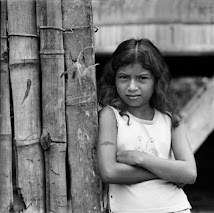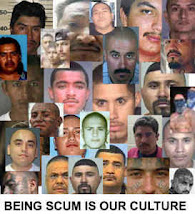











Illegal immigrants are responsible for 12 murders every day compared to 1.7 soldiers killed daily in Iraq.






















.jpg)




.jpg)

Hispanics, otherwise known as spics and beaners, are a vast and terrible infection. This plague has infiltrated every aspect of America and soon will continue to destroy life in any and every form that we currently recognize.
This pestilence may be even greater and farther reaching than the bubonic plague was centuries ago. This simple fact has resulted in the beaner swarm's well known accolade: La Muerte Castaño, A.K.A. "The Brown Death".
Spics' bodies are generally considered to be an abomination of the human form. They are short, stubby, useless hunks of flesh and bone which are wrapped in a disgusting shit-brown elastic substance.
The Spic genus shares many aspects with numerous other animals that somewhat resemble their evolutionary pathways. The earthworm for instance, is a simple creature which only has the objective to consume and breed. Spics are quite similar to this creature with the only difference being that while the earthworm may be useful for creating soil nutrients, beaners are useful for nothing but mowing lawns.
Spics' ancestors include horny Spanish conquistadors, various and sundry animals, and a legion of extremely primitive spider/monkey humanoids who ran nude in the this to be truth since how the beaners share so many characteristics with the said insect family.
The latest mutagen of the Spic species, known as both the "Border Jumper" and the more fitting "Illegal Alien", has finally consumed all the available produce and nutrients in its once-lush jungle homeland of Mexico. This event has pushed the insidious plague further north into the peopled lands of the USA and Canada.
Today, spics carry on a proud tradition of being slaves to their white masters. This has been a most fortunate thing for business, which has suffered since Abe "Hitler" Lincoln said people couldn't own niggers anymore. Most of them make tolerable cooks, landscapers, or basic manual laborers. W, in yet another fail move of his insane presidential strategystarted to call attention to the over 9000 spics crawling across the border like army ants.




